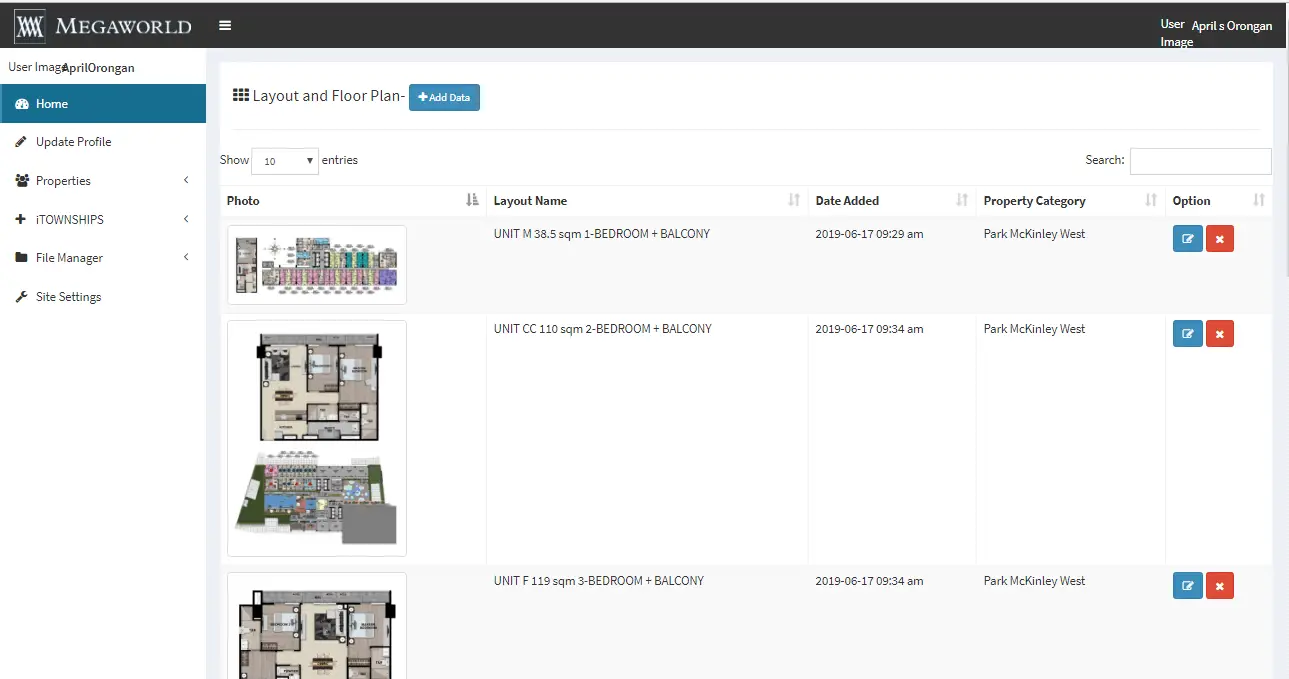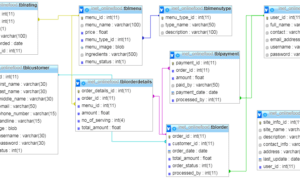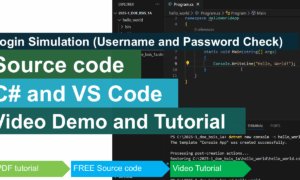Virtual Yoga Assistant using PoseNet
Table of Contents
- Virtual Yoga Assistant using PoseNet
- Introduction
- What is PoseNet?
- The Role of AI in Fitness and Wellness
- System Overview
- Objectives of the Project
- Technology Stack
- Features of the System
- 1. Real-Time Pose Detection
- 2. Yoga Pose Library
- 3. Posture Accuracy Feedback
- 4. Voice Guidance and Visual Alerts
- 5. Progress Tracking and Analytics
- 6. Adaptive Difficulty
- 7. Multi-Pose Session Support
- 8. Data Privacy and Offline Mode
- Implementation Steps
- Potential Use Cases
- 1. Home-Based Fitness Coaching
- 2. Virtual Class Integration
- 3. Rehabilitation and Physical Therapy
- 4. Corporate Wellness Programs
- 5. Educational Use
- Challenges and Future Improvements
- Summary and Conclusion
Introduction
In an era where health and wellness have become integral parts of daily life, technology has stepped in to make fitness more accessible, interactive, and personalized. The Virtual Yoga Assistant using PoseNet is an innovative application that bridges artificial intelligence and physical well-being. Using advanced pose estimation models, this system helps users perform yoga poses correctly by analyzing body movements in real time.
Unlike pre-recorded workout videos, this AI-powered assistant provides live feedback and posture correction, guiding users toward proper alignment and preventing injuries. As the popularity of virtual fitness grows, particularly after the pandemic era, systems like this one are transforming how individuals approach home-based exercise and mindfulness practices.
What is PoseNet?
PoseNet is a deep learning model developed by Google that estimates human body positions from an image or video feed. It identifies key body landmarks such as shoulders, elbows, knees, hips, and ankles, mapping them as a “skeleton” of 17 body points. By calculating the relative positions of these keypoints, PoseNet can detect how a person moves, stands, or performs an action.
PoseNet is particularly suited for browser-based or mobile applications through TensorFlow.js, allowing real-time pose detection directly on the user’s device. This makes it a perfect foundation for developing an interactive yoga assistant that can guide, score, and correct poses seamlessly without needing specialized hardware.
The Role of AI in Fitness and Wellness
Artificial Intelligence (AI) has revolutionized the fitness industry. From smart gym equipment and wearable fitness trackers to computer vision–based workout assistants, AI enables a level of personalization that traditional fitness methods can’t offer.
In wellness applications, AI helps monitor posture, track activity levels, and even provide real-time coaching. For yoga, in particular, AI can analyze poses with precision and offer instant corrections. The Virtual Yoga Assistant leverages these AI capabilities to create a digital coach that blends mindfulness with data-driven accuracy.
By incorporating computer vision, machine learning, and data analytics, the system promotes self-guided learning while ensuring safety and effectiveness—perfect for beginners and enthusiasts alike.
System Overview
The Virtual Yoga Assistant using PoseNet uses a standard webcam or smartphone camera to track the user’s body in real time. PoseNet identifies and maps 17 key points of the body, and the system compares these points with pre-defined reference poses stored in a yoga pose library.
When discrepancies are detected—such as misaligned arms or incorrect leg angles—the assistant provides instant visual or voice feedback to help the user adjust. Additionally, it can log user progress, score performance accuracy, and track improvements over time.
The entire system operates through a lightweight interface that makes yoga accessible from the comfort of home while maintaining the guidance of an instructor through AI-based corrections.
Objectives of the Project
- To develop a real-time yoga posture analysis system using PoseNet.
- To guide users in performing yoga poses with proper alignment.
- To provide immediate visual and auditory feedback on body posture.
- To encourage wellness, mindfulness, and proper exercise habits.
- To track user progress and improvement using stored data and analytics.
Technology Stack
Building a robust and responsive Virtual Yoga Assistant requires an integrated set of tools and frameworks:
- Frontend: HTML5, CSS3, JavaScript, Bootstrap
- Backend: Flask (Python) or Node.js (optional for logging user data)
- AI/ML Model: PoseNet (TensorFlow.js or TensorFlow Lite)
- Database: Firebase / MongoDB for user data and performance logs
- Visualization: Chart.js or D3.js for progress tracking graphs
- Hardware: Standard webcam or mobile camera
This stack ensures smooth client-side performance, secure data handling, and scalable functionality for web or mobile deployment.
Features of the System
1. Real-Time Pose Detection
The system uses PoseNet to identify 17 key body points in real time and map them into a skeletal structure, allowing for dynamic tracking of movements during yoga sessions.
2. Yoga Pose Library
A built-in library includes various yoga poses such as Tree Pose (Vrikshasana), Warrior Pose (Virabhadrasana), and Downward Dog (Adho Mukha Svanasana), each with reference coordinates and joint angles.
3. Posture Accuracy Feedback
The system compares the user’s live pose data with stored reference poses. If deviations exceed a threshold (e.g., 15° angle difference in arm alignment), the assistant provides feedback like “Straighten your spine” or “Raise your right arm higher.”
4. Voice Guidance and Visual Alerts
For accessibility and convenience, the assistant includes both voice cues and visual overlays to indicate corrections. For example, incorrect joints might be highlighted in red.
5. Progress Tracking and Analytics
The user’s daily performance is stored and visualized as progress charts. The system calculates pose accuracy, completion rates, and consistency metrics over time.
6. Adaptive Difficulty
The system can recommend beginner, intermediate, or advanced yoga routines based on user performance, making it inclusive for all skill levels.
7. Multi-Pose Session Support
Users can follow guided yoga routines that transition between multiple poses with continuous evaluation and real-time scoring.
8. Data Privacy and Offline Mode
Because PoseNet can run locally via TensorFlow.js, the user’s video feed doesn’t need to be uploaded, ensuring complete privacy and offline functionality.
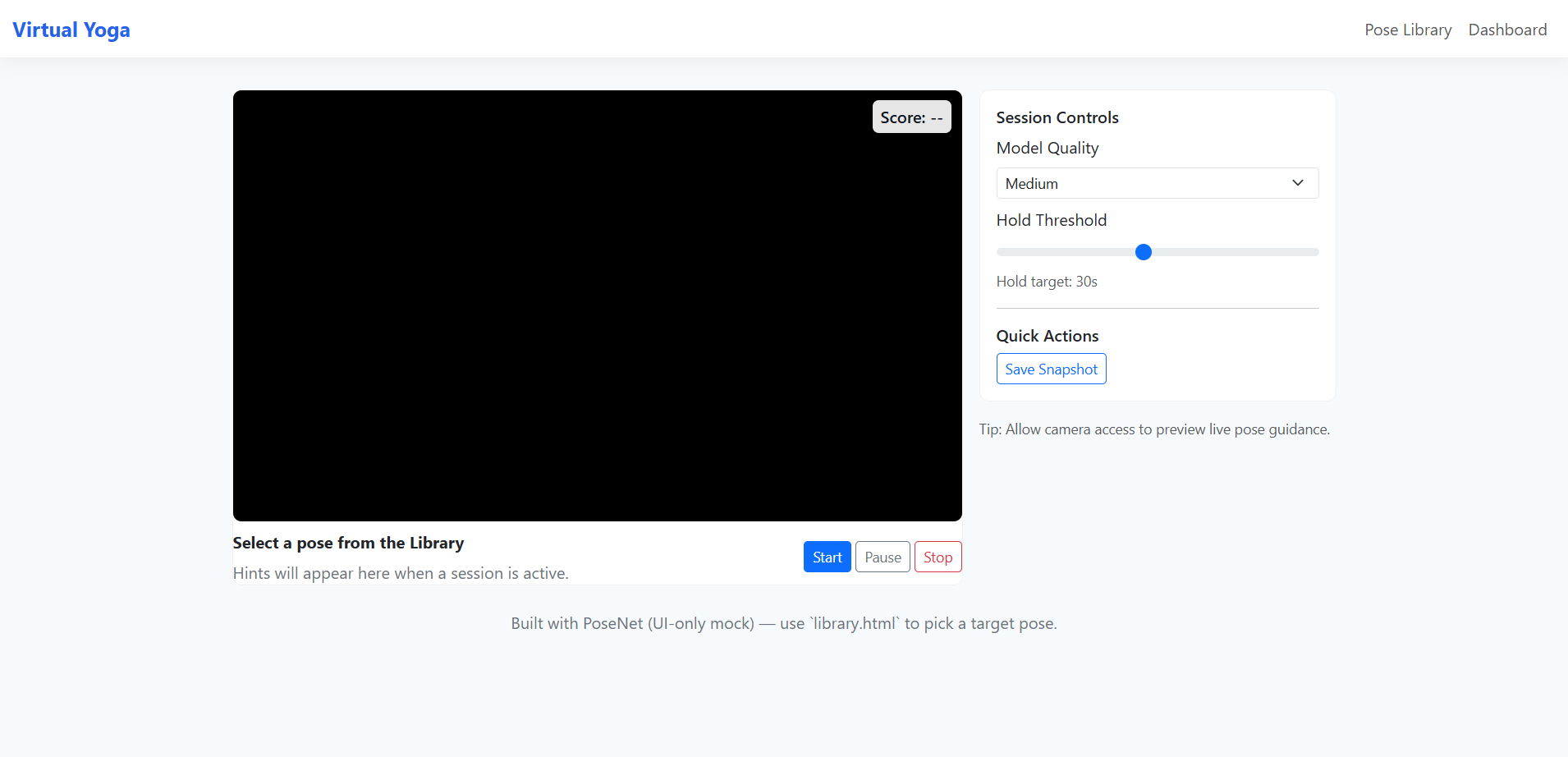
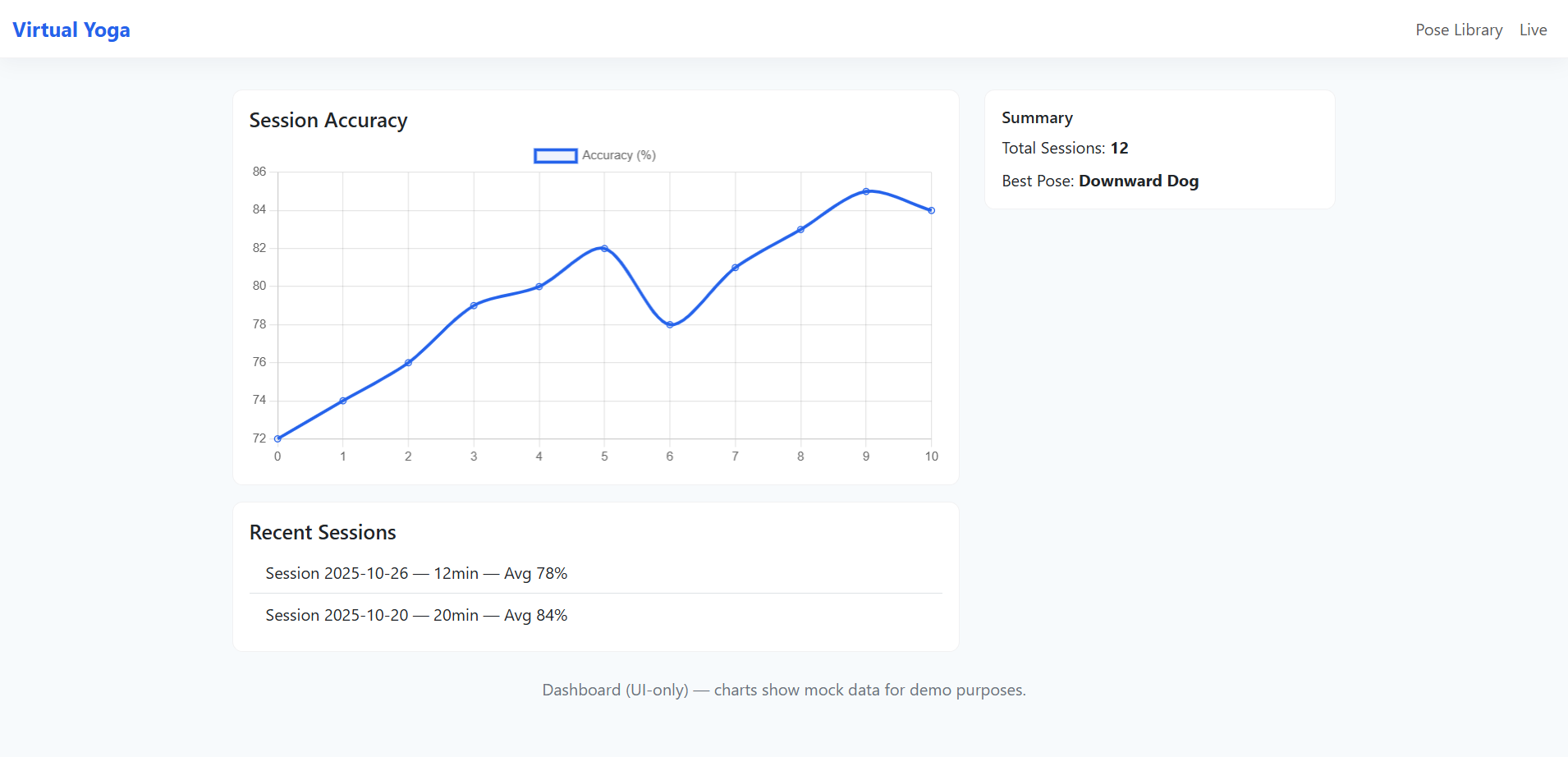
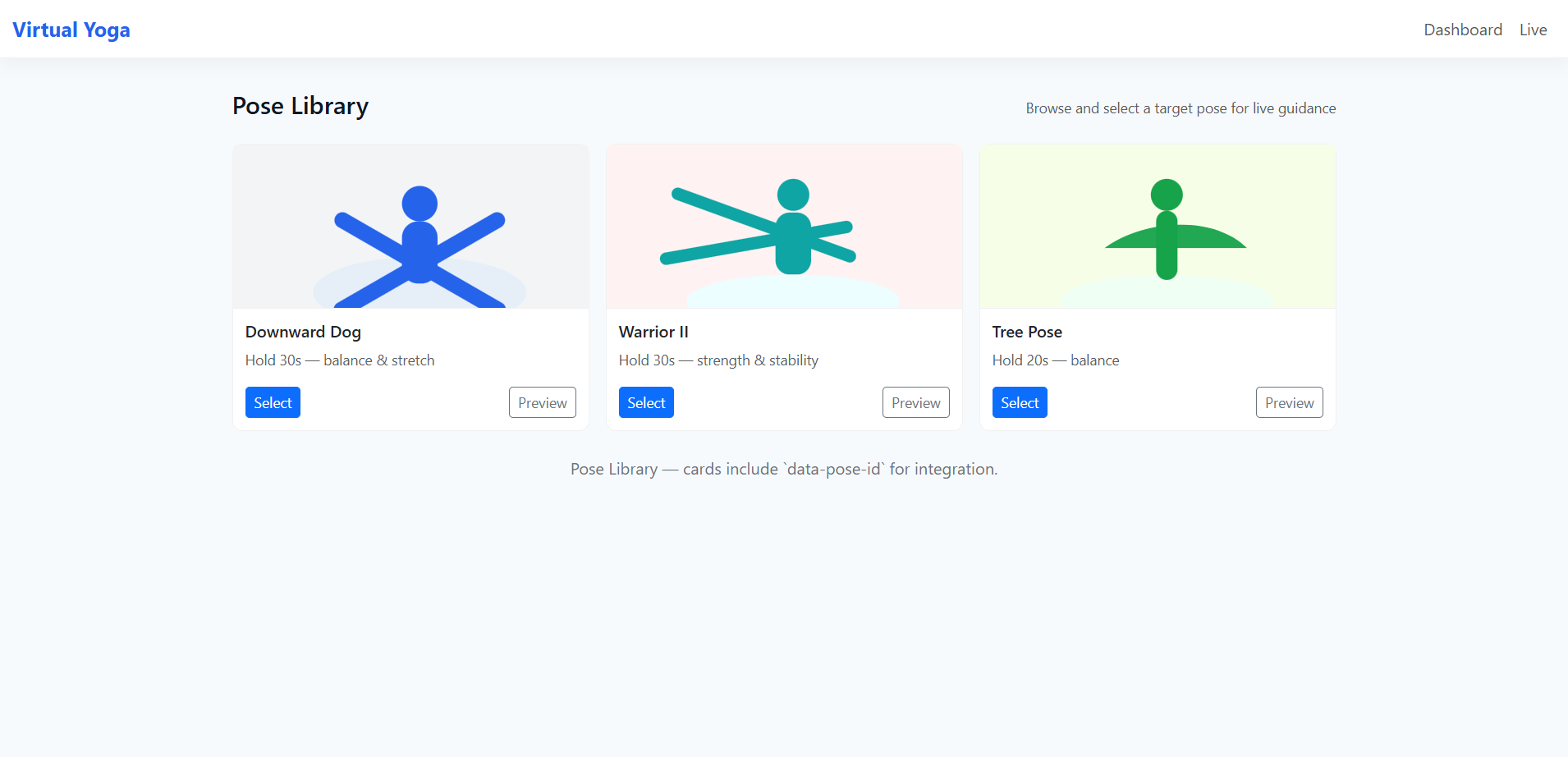
Implementation Steps
- Integrate PoseNet Model: Use TensorFlow.js to load and initialize PoseNet for the webcam feed.
- Capture and Preprocess Video Input: Access the camera stream and resize the input for efficient pose estimation.
- Detect Keypoints: Extract 17 body landmarks and calculate angles between joints.
- Compare with Reference Poses: Use a pre-defined JSON dataset of yoga pose coordinates for matching.
- Feedback Mechanism: Highlight errors visually and provide corrective suggestions through text or audio.
- Progress Logging: Save user performance metrics in a cloud database (Firebase).
- Display Results: Render pose accuracy scores and improvement charts on the user dashboard.
Potential Use Cases
1. Home-Based Fitness Coaching
Ideal for individuals practicing yoga at home without instructors. The assistant acts as a personal trainer available 24/7.
2. Virtual Class Integration
Yoga studios and fitness centers can use this as a hybrid tool for online classes, allowing instructors to track participant accuracy remotely.
3. Rehabilitation and Physical Therapy
The system can be adapted for physiotherapy exercises, helping patients perform recovery movements correctly while therapists monitor progress.
4. Corporate Wellness Programs
Companies can integrate the assistant into wellness platforms to promote health breaks, reduce stress, and encourage mindfulness among employees.
5. Educational Use
Yoga instructors and students can use the system as a teaching aid to visualize correct postures and identify alignment issues.
Challenges and Future Improvements
While PoseNet provides accurate keypoint detection, there are technical and usability challenges to address. Poor lighting, camera angle, and background clutter can affect pose accuracy. Future iterations can incorporate MediaPipe BlazePose for 3D tracking, improving precision.
Additionally, machine learning algorithms could personalize feedback further—using user history to adjust difficulty or suggest custom poses. Integration with wearable devices like smartwatches or posture sensors can add biometrics (e.g., heart rate or breathing) to the feedback loop, creating a complete health monitoring system.
Summary and Conclusion
The Virtual Yoga Assistant using PoseNet represents the next step in AI-driven wellness technology. It empowers users to practice yoga safely, efficiently, and independently while maintaining correct form and alignment.
By combining computer vision, machine learning, and intuitive design, this system promotes both physical and mental wellness in a digitally connected world. As AI models like PoseNet evolve, the boundaries of home fitness will continue to expand—making personalized, interactive, and mindful training experiences more accessible than ever.
Ultimately, this project not only showcases the technical capabilities of PoseNet but also reinforces the potential of artificial intelligence in transforming health and wellness into a smarter, data-informed, and user-centric experience.
You may visit our Facebook page for more information, inquiries, and comments. Please subscribe also to our YouTube Channel to receive free capstone projects resources and computer programming tutorials.
Hire our team to do the project.
